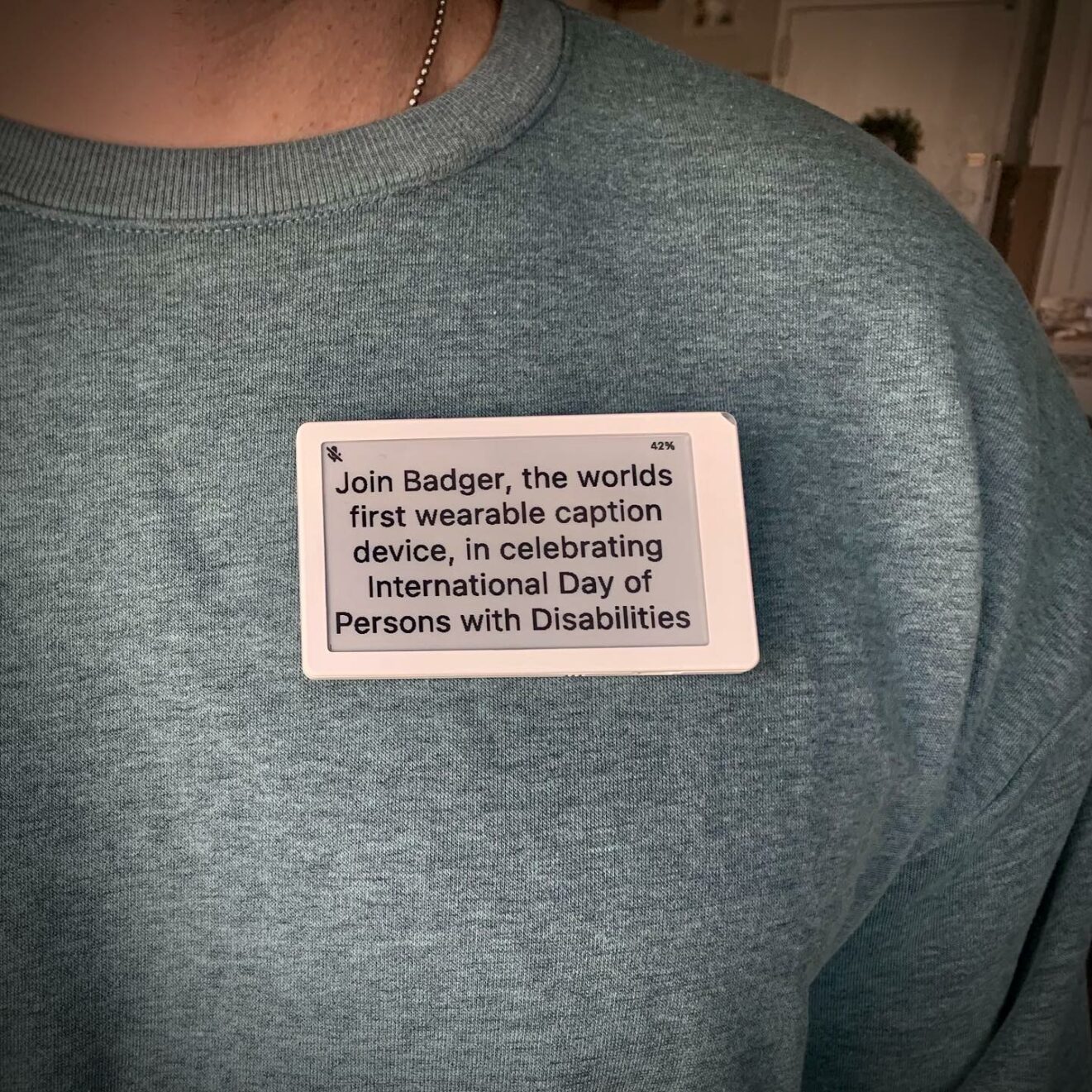Roughly every other weekday from January 20 to January 27, BridgingApps will publish a blog post featuring one “Favorite 5” item from our recent article “Consumer Technology, Assistive Technology, and the Latest in Electronic Tech.” (For the full list, see the last section of the Consumer Technology article, “BridgingApps Picks for the Best New Consumer Technologies.”)

As most people learned during the days of mandatory virus masks, it can be difficult to communicate face-to-face when the mouth-to-eye element is removed. The challenge is greater in a noisy environment, or when the people involved speak with different accents, or when one or more conversationalists have hearing disabilities. Even going unmasked—which may not be an option in a medical or other germ-conscious environment—does little to improve communication in many such cases.
Enter the new Badger smart badge, which allows users to wear their own caption generator on a lapel or stand it on a desk. Here’s how it works (an iPhone app, a phone of version 8 or newer technology, and a Bluetooth connection are required):
- The physical badge’s dual-mic design “hears” the user’s spoken words and transmits them to a processing unit.
- The unit translates the words to written text.
- The badge receives the text and displays it as captions, in an easy-to-read format of dark typeface on a light-colored screen.

The entire process moves at real-time speed to make conversation easy and effective.
Initial marketing of the Badger is focused on the healthcare industry, where masks are routine and accurate communications can be a life-or-death matter. However, potential usefulness reaches far beyond medical settings:
- Speech-to-text capacity includes the ability to translate between over 50 languages, opening a world of possibilities for intercultural business settings from coffee shops to trade shows.
- Even everyday communications between neighbors and family members will be facilitated, especially where multiple languages are spoken, health concerns require caregivers to be masked, or background noise interferes with following of conversation. (For many people with autism, hearing is not impaired but ability to filter out distractions is.)
- In addition to allowing wearers to communicate with people who have hearing impairments, Badgers are potential assistive technology to help those with speech disabilities become more understandable to everyone.
See the manufacturer’s app page to apply for the Badger pilot program or submit questions.

